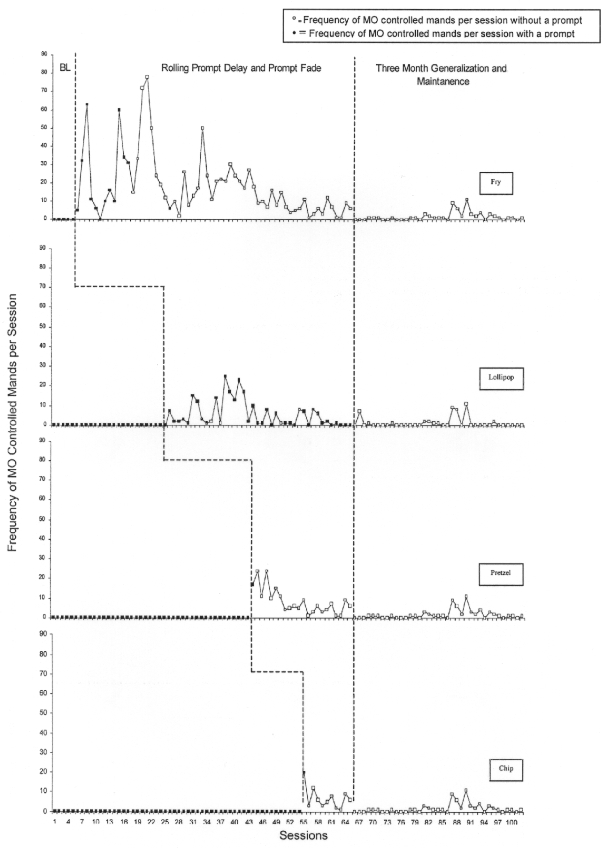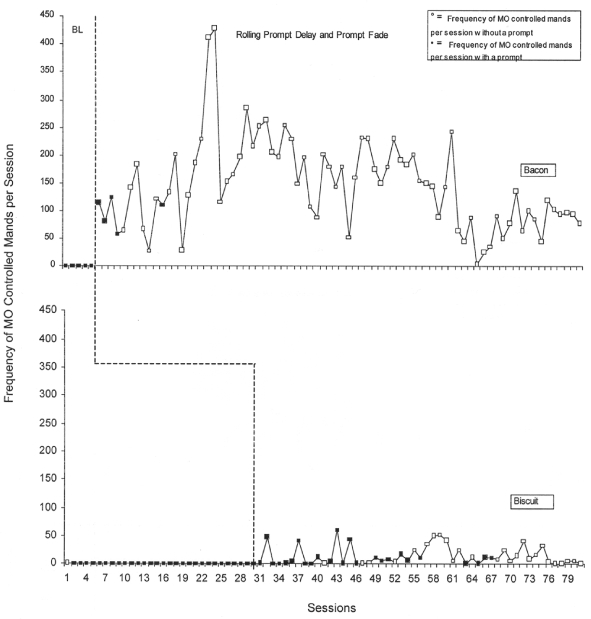Abstract
The following paper describes Lowenkron's model of joint (stimulus) control. Joint control is described as a means of accounting for performances, especially generalized performances, for which a history of contingency control does not provide an adequate account. Examples are provided to illustrate instances in which joint control may facilitate performance of a task.
Keywords: joint control, verbal mediation, matching to sample, conditional discrimination
Lowenkron and colleagues (Lowenkron, 1984, 1988; 1989; 1991; 1998; 2004; Lowenkron and Colvin, 1992; 1995) have developed a model that seeks to account for complex behavior using already defined and well-established operant principles, concepts and terms. The model, which Lowenkron later called “joint control” (although he might have called it joint stimulus control) is especially useful for understanding complex and delayed discriminations within a parsimonious and purely behavioral framework and with no appeal to hypothetical concepts or structures. It emphasizes the role of the listener as an active behaver rather than as a processor of information, and it accounts for that behavior in terms of antecedents and consequents, and the listener thus becomes a speaker.
Lowenkron has previously described this model in a series of empirical and conceptual/theoretical papers. Applications identified by Lowenkron include accounting for the development of symmetrical (bi-directional) word-object relations1 and for verbally mediated generalization of performances with untrained stimuli. The current paper will elaborate on Lowenkron's model and also provide additional examples and applications. (Readers looking for more precise and technical descriptions of joint control are directed to Lowenkron, 1998 and 2004.)
Joint Control Scenarios
In a conditional discrimination problem, in which a child is asked to point to a particular color stimulus from an array, the correct selection may be the product of simple contingency shaping. Through repeated reinforcement the child has learned to touch GREEN when given the vocal instruction “Touch GREEN.” However, in the case of novel or untrained behavior, we can not appeal to direct histories of reinforcement, and thus cannot account for this performance as unmediated (Lowenkron, 2004). The required behavior may occur, however, as a mediated response. Suppose that a child has been taught to tact color samples but has never been instructed to “Touch the green one.” In addition to the ability to tact colors, the child already has a good repertoire of repeating short sentences and phrases. Given this and despite lacking a direct reinforcement history for pointing to colors in response to their spoken names, the child may nevertheless point correctly, illustrating the role of joint control. As seen in Figure 1, the child is shown a small array of color cards and instructed to “Point to green.” As the group of cards are looked over (scanned), the relevant part of the instruction, “green,” is repeated. Two separate but related behavioral events are occurring at the same time: the repetition of the target word “green” plus scanning of the color card array along with emitting a tact of the color shown on each card. As the child looks at the color card array, the various color names are emitted as tacts. The yellow card evokes “yellow” but that card is rejected because that response does not match the echoic that is being repeated at the same time. The same process occurs with respect to the red card—no match. Finally the green card is seen, and the tact “green” occurs. At that point a tact is emitted whose topography is the same as the topography simultaneously being rehearsed as a self-echoic response. The occurrence of a topography both as a tact and as a self-echoic, then becomes the basis for a correct selection, and the selection response itself (pointing at the color) functions as a self-descriptive autoclitic response (Lowenkron, 1998; 2004; Skinner, 1957).
Fig. 1.

Stimulus selection episode in which joint control by matching verbal topographies facilitates selection of color sample.
An additional example may be useful. Suppose a writer is sitting at a computer typing and reaches a point at which a particular book is needed for a reference. She might say to herself, “I need Science and Human Behavior.” As she goes upstairs to get the book she might repeat the name of the book a few times. The initial statement of the book title or the statement plus the repetitions may be seen at S1 in Figure 2. As she stands in front of her bookcase she reads the titles of the books until she emits a textual response “Science and Human Behavior” (S2) whose topography matches the topography of the self-echoic. At this point the occurrence of two sources of control over a single topography causes a selection to be made. This response is in turn reinforced by the possession of the correct book. If either stimulus were missing the joint control would not have occurred and a selection would not have been made. For instance, without the self-echoic (S1) the textual response might have still occurred, but the stimulus it produced would not have had any special power to cause the selection of Science and Human Behavior. Assuming that there was some reinforcement history associated with the selection of all or most of the books in the bookcase, without the prior self-echoic reading the title of any one of the books may have produced a stimulus that was then discriminative for selection of that book. Any book on the shelf may have some discriminative properties as a result of a prior reinforcement history but an additional stimulus is required in order to make a correct selection at a particular time.2 In this case the additional stimulus comes in the form of a self-echoic response (or at least some prior verbal response) whose topography matches the current textual topography and thus jointly controls a selection response.
Fig. 2.

Facilitation of delayed selection by joint control.
Recently a colleague suggested that verbal mediation was not necessary in order to account for performances such as these, but that they could result simply from a history of reinforcement and discrimination training. To elaborate, he facetiously suggested that he did not require a joint-control event in order to effectively use the Men's room, but he was probably trained at an early age how and where to perform such activities. If he were in a foreign country where different symbols were used to distinguish the Men's room from the Women's room, an episode such as is illustrated below might be more accurate. On his first day in this country a friend tells him that he should use the restroom that has a symbol that looks like an “X” on the door. As he is unfamiliar with these and other symbols around him, he repeats the phrase “looks like an X,” first as an echoic then as a self-echoic (S1). When he encounters a symbol that allows him to emit the tact, “looks like an X” (S2) he enters the room and is pleased to find himself indeed in the Men's room. When direct contingency control is not possible or not practical, it may be seen that joint control is a plausible and parsimonious account of generalized performance.
In addition to these hypothetical examples, joint control also has applied implications. In language-training programs for children with language deficits joint control may be used to facilitate improved and novel response combinations. Teaching a child to repeat an instruction may improve the performance of activities that are temporally distant from the moment when an instruction is given. Thus, suppose a teacher teaches a child to select a number of different items such as a book, paper and pencils. Independently the child may be taught to go to various locations in the classroom such as the door, the window and the chalkboard. However, efforts to combine these activities (“Go to the window and get the book.”) have failed, possibly because by the time the child gets to the window, the rest of the stimulus (“. . . and get the book.”) is no longer available. Were we to teach the child to emit an echoic/self-echoic response following such an instruction, then when she arrived at the designated location she would be able to produce the topography (“get the book”) which could then enter into joint control with the tact “book” evoked by the book sitting at the window. Joint control would thus seem to allow for improved performance in those cases where a task must be performed after some delay.
Conclusion
Joint control is a phenomenon that involves verbal mediation of some sort of selection response. The basic scenario of this phenomenon involves control of the selection response (and control of a self-descriptive autoclitic) by the match in topography of two separate but interrelated verbal operants, an echoic and typically a tact. The model is a parsimonious and purely behavioral account of complex behavior that has previously been difficult to account for.
Footnotes
Word-object bi-directional symmetry refers to the observation that children may be trained to either tact objects or to find objects given their name and once one of these relations is taught, the other may emerge without training. Elaborate
*”For Dummies” is trademark Wiley and Sons publishers. Permission being sought to use this title.
This paper is based on a presentation given at the 29th annual convention of the Behavior Analysis Association of Michigan. Thanks to Barry Lowenkron for helpful comments on an earlier draft of this manuscript. Correspondence concerning this article should be addressed to David W. Sidener, Garden Academy, P.O. Box 1504, Montclair, NJ 07042; e-mail: David.Sidener@GardenAcademy.org.
The situation here involves more than just the sight of the needed book, SHB, as a discriminative stimulus. Assuming that all of the books on the shelf have been used in the past, their selection from the shelf following seeing their titles would have at some point in the past been reinforced. Thus, selecting a book is not a simple discrimination but a conditional discrimination, one which requires a conditional stimulus in addition to the sight of the book. The conditional stimulus here is the writer's statement that she needs Science and Human Behavior. The only way that stimulus is available at the time of selection is if she preserves the stimulus by repeating it occasionally.
REFERENCES
- Lowenkron B. Coding responses and the generalization of matching-to-sample in children. Journal of the Experimental Analysis of Behavior. 1984;42:1–18. doi: 10.1901/jeab.1984.42-1. [DOI] [PMC free article] [PubMed] [Google Scholar]
- Lowenkron B. Generalization of delayed identity matching in retarded children. Journal of the Experimental Analysis of Behavior. 1988;50:163–172. doi: 10.1901/jeab.1988.50-163. [DOI] [PMC free article] [PubMed] [Google Scholar]
- Lowenkron B. Instructional control of generalized relational matching to sample in children. Journal of the Experimental Analysis of Behavior. 1989;52:293–309. doi: 10.1901/jeab.1989.52-293. [DOI] [PMC free article] [PubMed] [Google Scholar]
- Lowenkron B. Joint control and the generalization of selection-based verbal behavior. The Analysis of Verbal Behavior. 1991;9:121–126. doi: 10.1007/BF03392866. [DOI] [PMC free article] [PubMed] [Google Scholar]
- Lowenkron B. Some logical functions of joint control. Journal of the Experimental Analysis of Behavior. 1998;69:327–354. doi: 10.1901/jeab.1998.69-327. [DOI] [PMC free article] [PubMed] [Google Scholar]
- Lowenkron B. Meaning: A verbal behavior account. The Analysis of Verbal Behavior. 2004;22:121–126. doi: 10.1007/BF03392996. [DOI] [PMC free article] [PubMed] [Google Scholar]
- Lowenkron B. Joint control and the selection of stimuli from their description. The Analysis of Verbal Behavior. 2006;22:129–150. doi: 10.1007/BF03393035. [DOI] [PMC free article] [PubMed] [Google Scholar]
- Lowenkron B, Colvin V. Joint control and generalized nonidentity matching: Saying when something is not. The Analysis of Verbal Behavior. 1992;10:1–10. doi: 10.1007/BF03392870. [DOI] [PMC free article] [PubMed] [Google Scholar]
- Lowenkron B, Colvin V. Generalized instructional control and the production of broadly applicable relational responding. The Analysis of Verbal Behavior. 1995;12:13–29. doi: 10.1007/BF03392894. [DOI] [PMC free article] [PubMed] [Google Scholar]
- Skinner B. F. Verbal behavior. New York: Prentice Hall; 1957. [Google Scholar]


